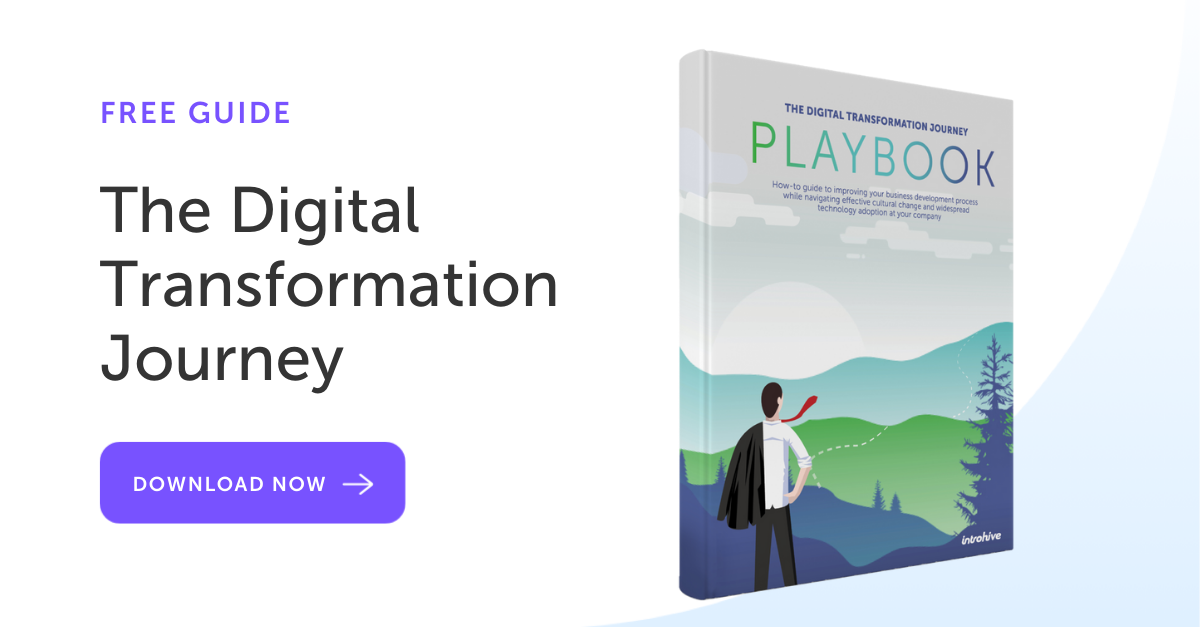According to a British Chamber of Commerce survey, 55% of businesses see a positive impact on their bottom line after 12 months of breaking into international markets. Taking your business global is a natural step for companies who desire exponential growth and new opportunities. But while 55% of companies see a positive impact, that leaves 45% who don’t.
Breaking into new markets is a tricky task that requires getting out of your comfort zone and selling to several different markets all over the world. With each market presenting its own set of unique challenges, forming an effective business development strategy becomes all the more difficult — something that likely contributes to that 45% number.
As a global provider of CRM automation, we’ve battled our own international business challenges and tackled them straight on. To help you form your own new market strategy, we spoke with our VP of Sales, Adam Draper, and General Manager of EMEA, Faisal Abbasi, from the active floors of Dreamforce 2017 to give you an inside look at how we approach our international expansion.
Below, we detail their top five tips on how to break into a new market.
- Follow Your Clients Into New Markets
- Keep Service Top of Mind
- Use Events to Foster Connections
- Secure Relevant Partnerships
- Focus on Relationships, Not Pricing or Product
1. Follow Your Clients Into New Markets
Penetrating a new market for your business is a daunting task. Having already built up your connections in one market, you’re essentially starting fresh all over again in another. Or are you?
By leveraging our existing relationships with clients and following them into new markets, we gave ourselves a little bit of a head start in the markets we were targeting.
“A lot of our global clients who started working with us in North America, were at a stage where they were ready to expand their Introhive usage over in Europe. We followed suit with that and it’s been absolutely phenomenal,” Adam says.
Odds are your company has a global client or a client who will be expanding overseas. If you can develop that relationship to a point where you are actively involved in that expansion process, you will put your company in a better position to expand. With an existing client already under your belt, you might see an uptick in referrals or brand awareness in the local market, placing your company higher up on the ladder than if you did not have that client.
2. Keep Service Top of Mind
With the customer experience becoming the top differentiator for brands by 2020, service is a focus area that should be prevalent in any business development plan. This is something we’ve put into practice when approaching our own expansion into the UK and EMEA markets.
“What we are now able to do, working on a global basis, is that we can cover an account from New York, Chicago, London, Munich, Paris, and so on. It gives us a much more broad size of market and ability to service those customers,” Faisal explains.
When approaching your own global business development, it’s important to avoid focusing only on the prospects you want to approach. It’s equally, if not more, important to focus on your existing clients and how you can better service them in a new market.
3. Use Events to Foster Connections
According to the recent Event Marketing 2018: Benchmarks and Trends survey, 80% of marketers believe that live events are important for success. Considering the success we’ve been seeing through live events, we would have to agree. When breaking into the EMEA market, events have raised our brand awareness and helped us strengthen our relationships.
“Raunuk Wahiwala, our event manager, has transformed the Introhive image and brand in the local market itself, so we’re now getting a phenomenal amount of traffic coming through around coming to our events, our webinars, and our lunch and learns,” Faisal says.
Allowing you to engage in a relaxed conversation with your targets without the added pressure or expectation of closing a deal, events are safe spaces to form natural connections. In addition, learning events can help you overcome the challenge of educating your clients in a one-time event in the form of a webinar or workshop, speeding up the sales process.

4. Secure Relevant Partnerships
An added bonus of attending and hosting events is that they increase your exposure in the local market, which can help you connect with big-name partners. If you can work with those partners and have their brand associated with yours, you can take your company’s profile to new heights.
“We’re doing sponsorships with the likes of Arsenal Football Club, Tesla, Metro Bank — names I didn’t think that we’d be securing for co-sponsored events. This helps us grow rapidly in the market,” Faisal shares.
Your own business can experience similar growth by sponsoring events with other big-name brands to reach a larger number of people and engage with more prospects. This practice of pairing up with the right partners can open a host of doors for your business in new markets.
5. Focus on Relationships, Not Pricing or Product
Because breaking into a new market is like starting with a clean slate, many of your prospects won’t know your product, price, or benefits. But instead of focusing on explaining those items to your clients, it’s important to become more client centric and develop your relationships.
“It’s not just about forming a relationship, it’s about maintaining that relationship and having grown-up conversations with them that aren’t focused around pricing, discounts, etc.,” Faisal says.
It’s important to have these strong relationships as they can help improve client retention, encourage larger deal sizes, and inspire a deeper level of trust and loyalty.
“We’re now able to better service our accounts and really understand those relationships so we’re retaining our clients for longer term success. We’re getting ahead of those retention challenges that a lot of other companies face,” Adam says.
If you’re looking to tackle breaking into a new market for your business, make sure you put your existing and new relationships at the center of your business development strategy.
Take a Deeper Look Into Our Global Strategy
Breaking into a new market takes a lot of grit, determination, and creative thinking. For more insider knowledge on how we expanded into new markets, view our full interview with Adam and Faisal from busy Dreamforce 2017.



